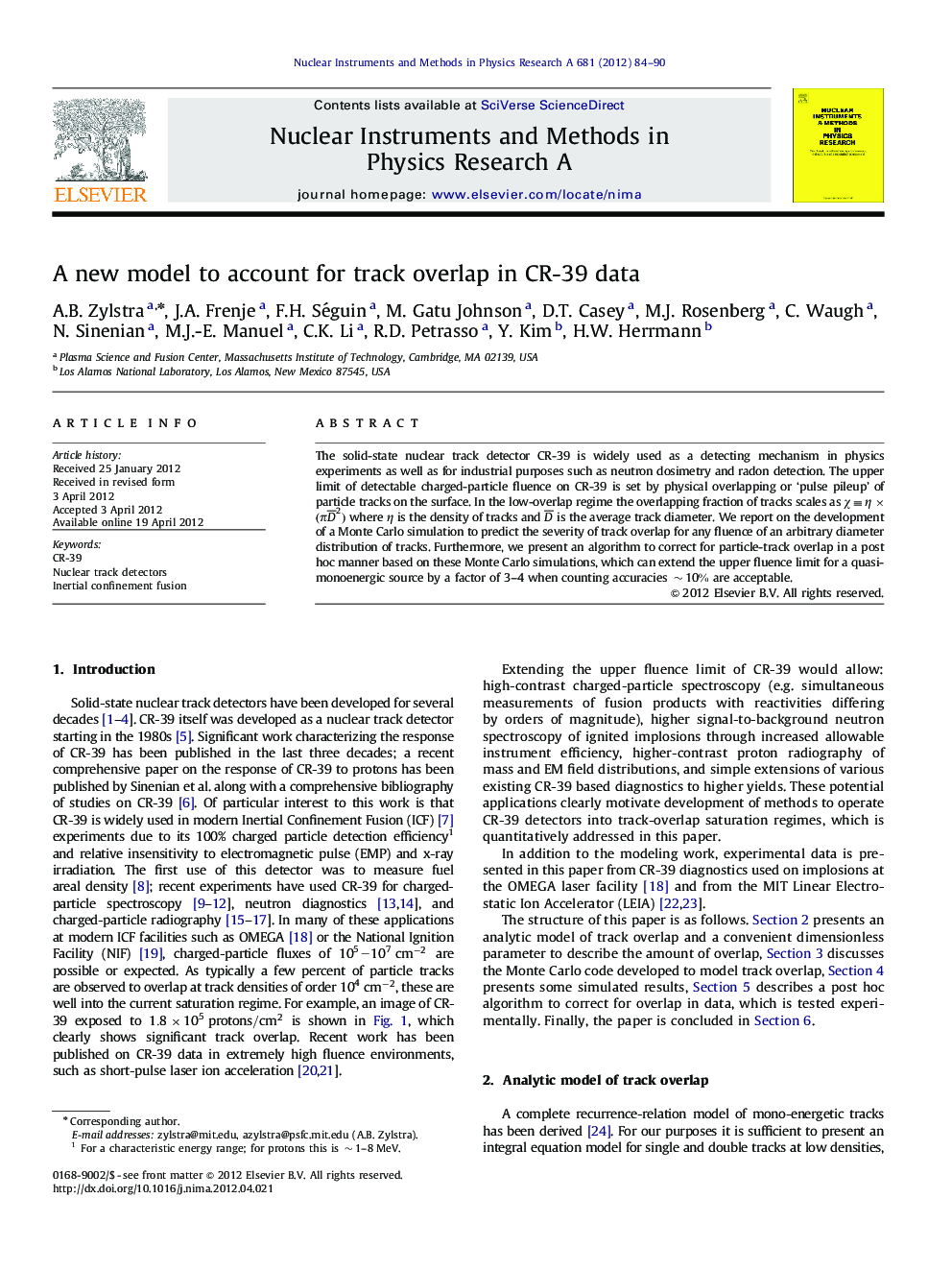| Article ID | Journal | Published Year | Pages | File Type |
|---|---|---|---|---|
| 1824091 | Nuclear Instruments and Methods in Physics Research Section A: Accelerators, Spectrometers, Detectors and Associated Equipment | 2012 | 7 Pages |
The solid-state nuclear track detector CR-39 is widely used as a detecting mechanism in physics experiments as well as for industrial purposes such as neutron dosimetry and radon detection. The upper limit of detectable charged-particle fluence on CR-39 is set by physical overlapping or ‘pulse pileup’ of particle tracks on the surface. In the low-overlap regime the overlapping fraction of tracks scales as χ≡η×(πD¯2) where ηη is the density of tracks and D¯ is the average track diameter. We report on the development of a Monte Carlo simulation to predict the severity of track overlap for any fluence of an arbitrary diameter distribution of tracks. Furthermore, we present an algorithm to correct for particle-track overlap in a post hoc manner based on these Monte Carlo simulations, which can extend the upper fluence limit for a quasi-monoenergic source by a factor of 3–4 when counting accuracies ∼10%∼10% are acceptable.
